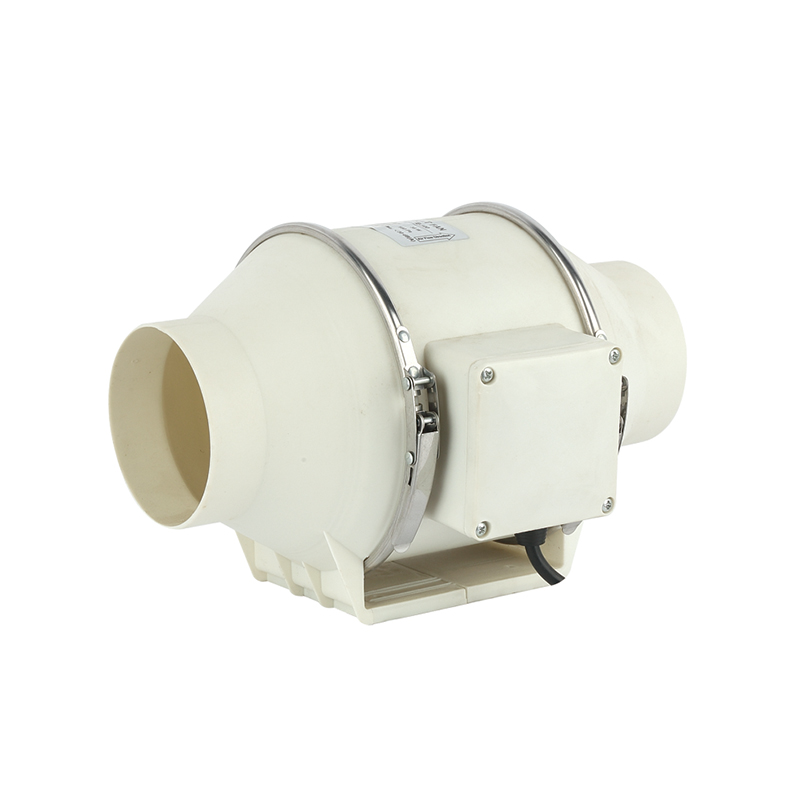Qinlang focuses on providing high-quality products and considerate services, and is committed to meeting every expectation of our customers.
The DKT-133 Cooling Ventilation Double Inlet Air Conditioning Fan is d...
See DetailsAn air flow duct booster fan is a device that helps increase the airflow within a duct system. These fans are often used in HVAC systems to address areas of a building that receive insufficient air circulation, such as distant rooms or areas with long duct runs. AC duct booster fans are designed to work seamlessly with your existing HVAC system, allowing for improved air distribution. Similarly, register duct booster fans are specifically intended to be installed at the registers or vents where the airflow exits the ducts, providing an extra push to help the air reach its destination.

These fans can be particularly useful in homes or offices with rooms that are too hot or too cold due to poor airflow, creating an uneven temperature distribution. With an air flow duct booster fan, you can enjoy a more balanced and comfortable environment without having to make significant changes to your existing system.
Why Install a Duct Booster Fan Without Cutting Ducts?
Cutting ducts for installation can be a time-consuming and costly process. It may involve a lot of work, including shutting down the system, removing or cutting sections of duct, and making adjustments that could cause additional complications. Moreover, modifying the ductwork could void manufacturer warranties or compromise the integrity of the HVAC system. Installing an AC duct booster fan or register duct booster fan without cutting ducts presents a more convenient and hassle-free alternative.
Not only does it save time and effort, but it also avoids the disruption of your home or office. These fans can be installed quickly and efficiently, minimizing downtime and preventing unnecessary construction. Additionally, by not cutting the ducts, you preserve the integrity of the existing system, ensuring that airflow remains as good as possible across the entire building.
How to Install a Duct Booster Fan Without Cutting Ducts
Choose the Right Type of Fan
Before installing any air flow duct booster fan, it's important to select the appropriate type for your needs. If you're looking to improve airflow in a specific room, a register duct booster fan is an outstanding option. These fans are designed to be installed directly into the vent or register, providing a powerful boost to the air flowing through. On the other hand, if you need a more general improvement across the duct system, an AC duct booster fan that can be installed in line with the existing ducts may be more suitable.
Locate the Airflow Problem
The next step is to identify where the airflow issues are occurring. Use a thermometer or a simple air velocity meter to determine which areas of the building are not receiving adequate airflow. Once you've pinpointed the problem, you can focus on installing the air flow duct booster fan in the right location for improve impact.
Install the Fan at the Register or Vent
For a register duct booster fan, the installation is relatively straightforward. Begin by removing the vent cover from the register where airflow is insufficient. Place the fan directly into the register, ensuring that it aligns with the existing vent openings. Most register duct booster fans are designed to sit snugly within the vent, and they often come with clips or brackets to secure them in place. Once the fan is positioned, reattach the vent cover, ensuring the fan is fully seated and positioned to direct airflow properly.
Install an Inline Booster Fan in the Ductwork
If you prefer an AC duct booster fan that works within the ducts themselves but still want to avoid cutting the duct, you can opt for an inline model that fits into the existing system without modification. These fans typically come with flexible connectors or straps that allow you to easily insert them into the ductwork at key locations. Simply place the fan where airflow is most needed—usually in areas with long duct runs or in spaces far from the HVAC unit.
Powering the Fan
Most air flow duct booster fans are powered by electricity, and they usually come with a standard power cord. For register duct booster fans, you can plug the fan into a nearby electrical outlet. Inline fans might require you to connect them directly to a power source, but they are typically designed for easy installation with minimal tools. Ensure that the fan is correctly wired and positioned to prevent any power issues or obstructions.
Test the System
Once the fan is installed, turn the HVAC system on and test the airflow. You should notice an immediate improvement in airflow and air distribution. Check for any noise issues or vibrations, as these can indicate an installation problem. If everything is working smoothly, you've successfully installed an air flow duct booster fan without cutting the ducts.